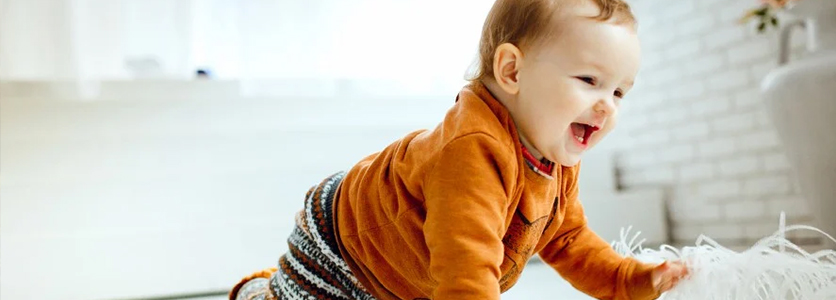Postural problems among children are on the rise but can sometimes result from parents interfering with natural milestones in infancy writes Dharvin Chalong Pillay
WHY does my child stand with his knees fully extended?
Why does my kid walk like a duck? My 2-year-old still walks on her toes. My boy falls frequently when he plays.
These are the few common questions and remarks I receive from parents.
Many parents are becoming more aware of their children’s physical conditions. Postural deviations include conditions such as flat feet, hyperextended knees, excessive lumbar lordosis or thoracic kyphosis.
Postural deviation is a common problem and on the rise among children these days.
While parents may only notice these conditions in children from the age of two onwards, the source of these problems can be traced back to infancy.
Every infant goes through phases of gross motor milestones from the age of 0-3 months onwards.
A normal sequence starts from infants lifting their heads during tummy time to rolling from back to chest and chest to back, crawling on the belly followed by full crawling, sitting with support, sitting independently, standing with support, walking with support and finally walking independently and running and playing. It is during these phases of the child’s development where the motor connection between muscles and joints integrate to form the necessary support and stability for posture.
Unfortunately, many parents tend to interfere with this natural process.

The natural phase of an infant’s gross motor development is fundamental to prepare his physical body structure for the environment.
For example, if the infant does not experience the crawling phase completely, the possibility of a weak hip joint and under-developed muscular structure may occur.
Many parents cannot wait for their child to walk these days so they disrupt the development of natural milestones by getting their child to stand too soon or walk on his toes too early when the infant’s muscles and joints have not fully developed the necessary strength and stability it needs.
Some parents place their children in baby walkers even before the child is ready to stand independently.
In the UK the Chartered Society of Physiotherapy (CSP) has already supported a ban on baby walkers because they disrupt the ability of children to develop their motor milestones completely.
Early risk
If the foundation of your child’s motor development is disrupted from the beginning, it will lead to a higher chance of postural deviations in the future.
Our body weight transfers through the hip-knee-ankle and our feet are the point of contact with the ground. The ankle joints are the weight bearing structure closest to the ground followed by the knee and hip. Hence, if our hip joint-muscles are not strong and stable, the weight transferred to the knee and ankle will be more than what the joint can tolerate, causing changes from ground up such as flat feet, knock knees and postural deviations throughout the body structure.
The modern sedentary lifestyle followed by high incidences of obesity and overweight are the primary contributing factors for increased postural deviations in children these days.
Excessive television and screen time, motorised transportation, fast food and lack of regular physical activity are the major contributors to poor physical conditions in our children, leading to an anatomical or biomechanical modification of the spine thus further leading to postural deviations of the body.
So, what is the solution? Play.

Since postural deviation is caused by muscular imbalance, the only solution to your child’s condition is physical activity that retrains and strengthens the joint-muscular structures. Children are encouraged to play and be physically active to retrain their motor milestone phases through games and physical activity that challenges their bodies to redevelop and reintegrate its neural pathways so that muscles and joints regain their strength and stability.
For example, you may get your child to participate in activities that require him to crawl in order to retrain hip structures.
Playing on soft, uneven and different surfaces will also challenge the child’s body to train the necessary sense of proprioception and develop stability for the body.
Crawling, climbing, squatting, running, jumping and hopping during outdoor play on grass and sandy areas are some of the best options to allow the child to experience various stimuli that will train him in balance, strength and agility.
Activities such as swimming (freestyle) weekly will also be great to train the posterior chain muscles that are responsible for keeping our bodies in an upright position.
Many parents invest in supportive devices such as foot arch support and back braces for their children in the hope that it will correct or even cure their child’s postural deviation.
The reality is these devices will not work on your child’s condition without exercise. The rule of thumb for muscles in the human body is “use it or lose it”.
This article first appeared in New Straits Times, 6 July 2020.
Share:
Was this article helpful?
Share:
Was this article helpful?
Health Packages
Elevate your health with tailored health packages at Columbia Asia Hospital. Take charge of your health journey today.
Pink October 2025
From
RM80
Pink October 2024
From
RM80
HLA Policyholders Promo: Influenza Vaccination
RM65
Find Out More
